For Anni Albers, an expert weaver and modernist pioneer, creation was an adventure in understanding purpose and materials. An intrinsic member of the Bauhaus faculty and an influential artist in her own right, Albers remains to this day lesser known than her counterparts in the drawing and painting departments, Paul Klee and Wassily Kandinsky, or her color theorist husband, Josef Albers.
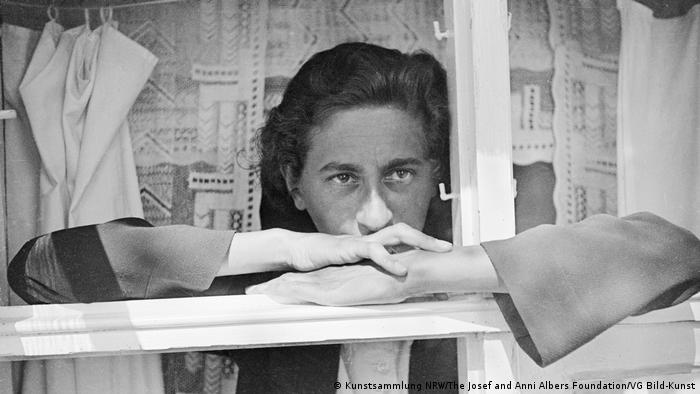
Anni was nevertheless an instrumental force in contributing to the aesthetic development of Modernist art, and furthering the philosophy of the Bauhaus school. Her influence is often overlooked in fine arts dialogues because many fine arts institutions continue to exclude the medium she is best known for: weaving.
The Early Life of Anni Albers
It was 1918. World War I was ending and in Berlin a nineteen-year-old woman named Annelise Fleischmann was determined to become a painter. Fleischmann applied to be an artist’s apprentice for the Expressionist painter Oskar Kokoschka, but she was rejected. Still she was determined to find her place in the world of art. In 1922 she applied to be a student at the Weimar Bauhaus. Again, she was rejected, yet this creative 23-year-old remained persistent.
Born on June 12, 1899 in Charlottenburg, a wealthy neighborhood in Berlin, Annelise Elsa Frieda Fleischmann was the child of a prosperous family. Her mother’s brothers ran the biggest publishing house in Europe at the time, the Ullstein publishing empire, and on her father’s side, a flourishing furniture manufacturing company.
After long negotiations with her conservative father, Mr. Fleischmann agreed to allow his daughter to attend art school. So, living off of a small salary from her father, Annelise Fleischmann rented a room where she worked on her Bauhaus application. Despite the meager accommodations (Fleischmann could bathe only once a week, in the bathroom down the hall), these were happy times for the determined young artist. She valued the simplicity of her lifestyle, in contrast to the grandeur of her parent’s world.
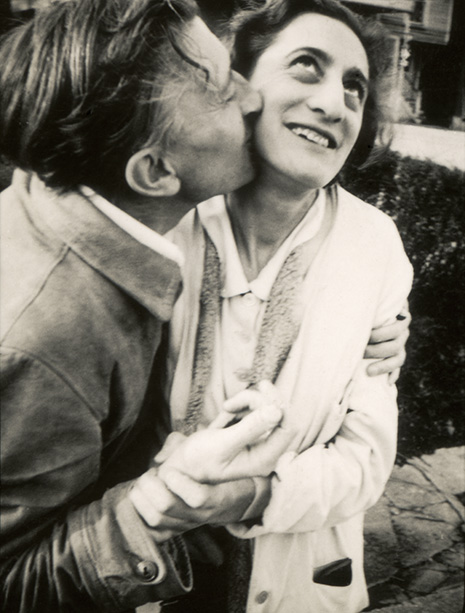
And it was here that she met Josef Albers, a dashing student in the Bauhaus’s glass workshop eleven years her senior. Albers would become her partner for the rest of their lives; three years after they first met, they were married. As their early romance blossomed, Albers helped Fleischmann prepare her second application to the Bauhaus. This time, she was accepted.
At The Bauhaus
The Bauhaus school, founded by Walter Gropius in April of 1919, just after the end of World War I, was dedicated to the promotion of new artistic values. Here, all art forms were valued equally, and the advancement of every art form was meant to spread to people all over the world, to provide enhanced aesthetic value in functional objects for people of any financial situation. At its core, the Bauhaus school promoted simplicity, utility, and honesty of design across all mediums. The school also devoted itself to equality in spite of gender and class differences. But there was perhaps more to this approach than was being presented.
When Fleischmann was accepted to the Bauhaus in 1923, she was told that, although she wanted to pursue wall painting, there were certain workshops that were more appropriate for female students.
Gropius suggested that female students should avoid “the heavy craft areas”, including carpentry, metalwork and painting, and instead pursue gentler crafts such as pottery, bookbinding, and weaving. Coupled with the challenges presented by an underlying neuromuscular disease, Fleischmann heeded Gropius’s words and found herself in the weaving workshop.
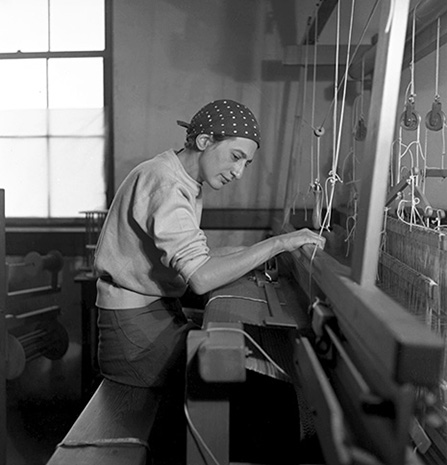
There, as a student of the Bauhaus from 1923-1930, Fleischmann developed and transformed a craft that she herself at first considered to be “sissy…just these threads.” But she would very quickly come to appreciate the intricacy and depths it was possible to draw out through woven textile creation.
From Student to Teacher, From Teacher to Exile
After developing her craft for seven years as a student in the weaving workshop, Anni Albers (now married to Josef) began to teach. Albers believed that woven textiles could fulfill all the promises made by the Bauhaus school principles; functional and utilitarian materials that honestly revealed the process of their construction, combined with an embrace of natural, organic, simple patterns. And woven textile objects could be spread widely, purchased by anyone regardless of economic class or social standing.
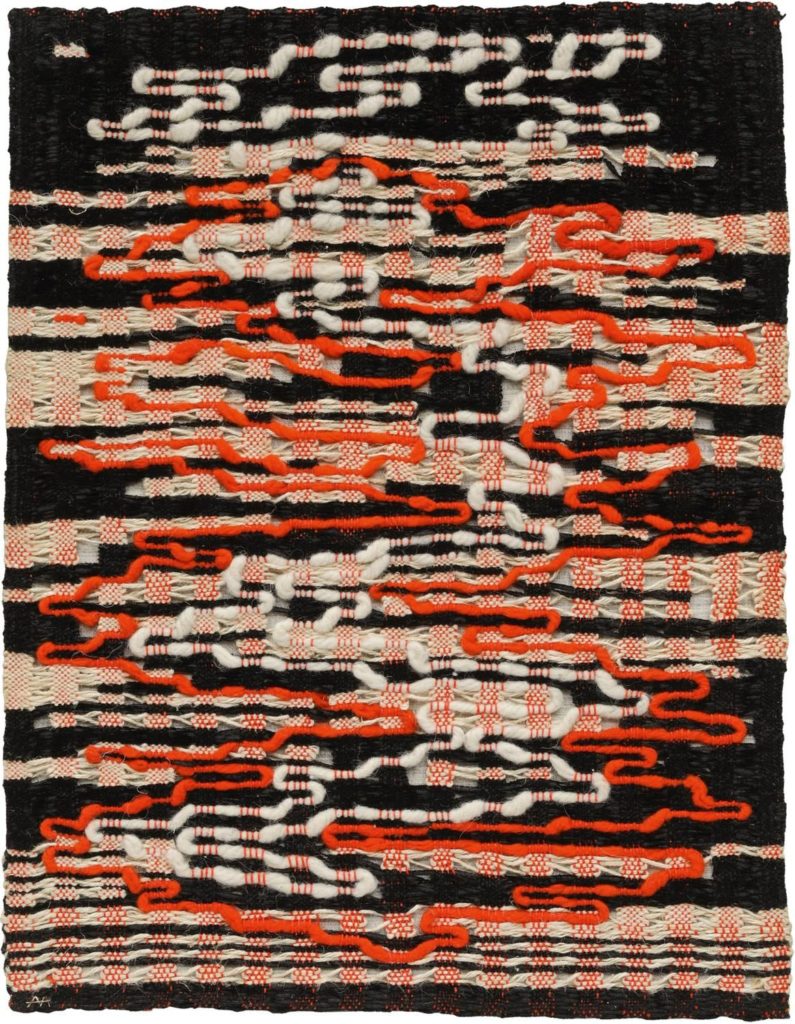
It was not in Germany but in America where Albers saw this vision truly come to fruition.
Her teaching career as head of the weaving workshop at the Bauhaus lasted only two years, from 1931-1932. This new role was cut short by the rise of Nazism in Germany. In 1933, the Bauhaus school closed down. Anni and Josef Albers fled to America, where she took up a new teaching position, at the Black Mountain College in North Carolina. Albers taught there for the next sixteen years and her influence on emerging textile artists was profound. In her workshop, experimentation, imagination, and innovation were key elements, sometimes even superseding technical ability.
Textile Arts Pioneer
During this period, Albers traveled to Mexico and to Peru, where she was deeply inspired by the traditional weaving techniques she encountered there. In addition to teaching and weaving, Albers wrote extensively. It was her definition of weaving that appeared in the 1963 Encyclopedia Britannica, and she wrote several seminal texts on the art of weaving, including On Weaving.
In 1949, Albers was honored for her artistic accomplishments; she became the first textile artist ever to have a solo exhibition at the Museum of Modern Art in New York City. A true pioneer in her field, Albers’s voice remains a defining influence for every subsequent generation of textile artists.
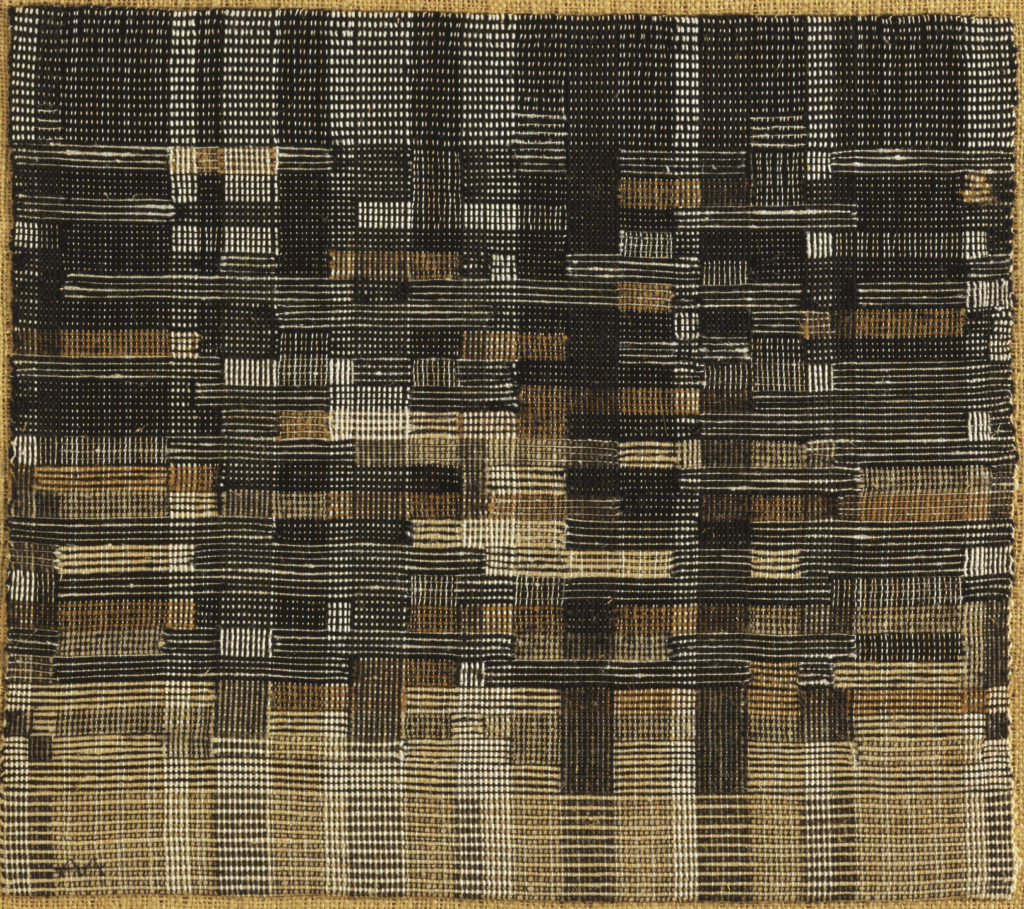
Her work paved the way for artists such as Lenore Tawney and Sheila Hicks, who have further developed the textile arts as a legitimate form of fine art experimentation. Her teaching also inspired multimedia artists Robert Rauschenberg and Ruth Asawa.
Anni Albers and Modernism
The theories and concepts that Anni Albers included in her written theses display all of the paradoxes that are intrinsic to weaving itself. For Albers, weaving was (or could be) both fine art practice and functional design craft. Her material choices were natural and organic (cotton, twill, jute, wool) and also cutting edge, practical, and synthetic (cellophane, nylon, plastic). Yet always, the Bauhaus principles are evident in her work.
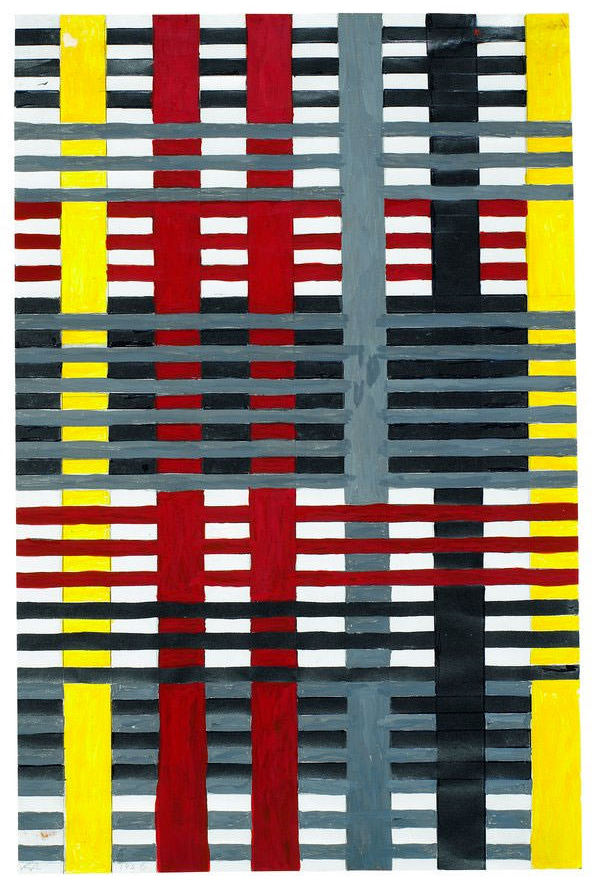
A true innovator of Modernist creations, Albers’s work combined function and form, experimentation and elements of machine production. She promoted weaving as a modernist medium across fields, securing its place in the dialogues of art, architecture, and design. The room dividers that she created for her solo exhibition at the MOMA were a direct nod to contemporary Modernist architectural preferences at that time, with its open floor plans and tall windows.
Her theories of design apply to all fields, no matter the medium. Albers’s respect for materiality, understanding of the power of machines to speed up creative processes, and commitment to intertwining form and function make her works and ideas a lasting and valuable contribution to the field of Modernism. Ultimately, Albers worked to develop the field of weaving in conversation with notions of universal appeal, geometric harmony, timelessness, and order.
About the Author:
In addition to her interest in Mid-Century Modern design, Sara Rosenthal is an artist and writer. You can find her artwork at www.saratrueart.com and @saratrueart. She is also the founder of Lovestruck Literature, where she writes custom romantic stories for people to give as gifts.